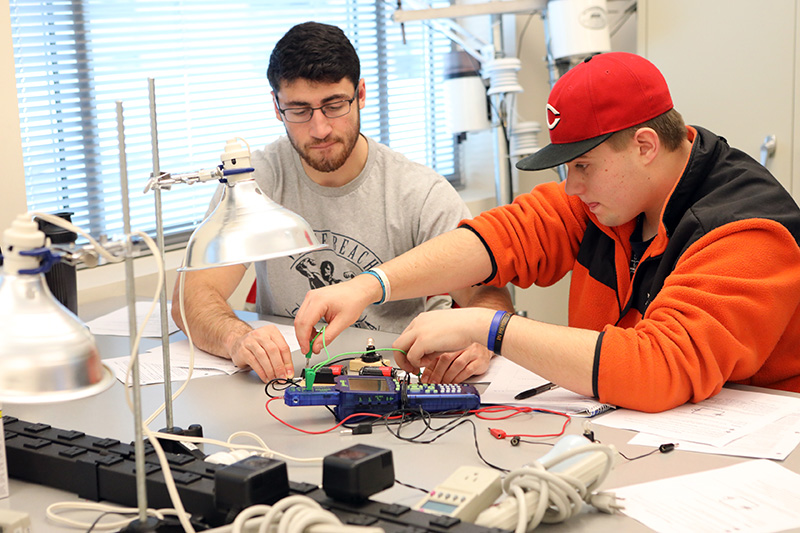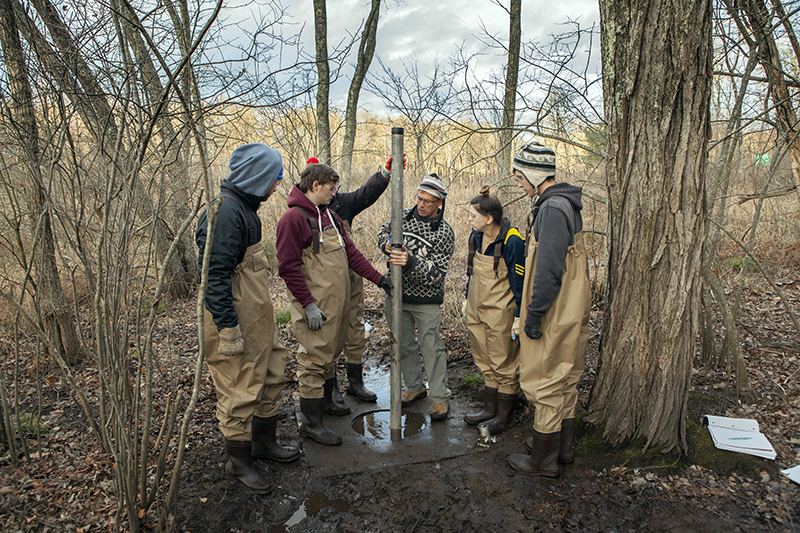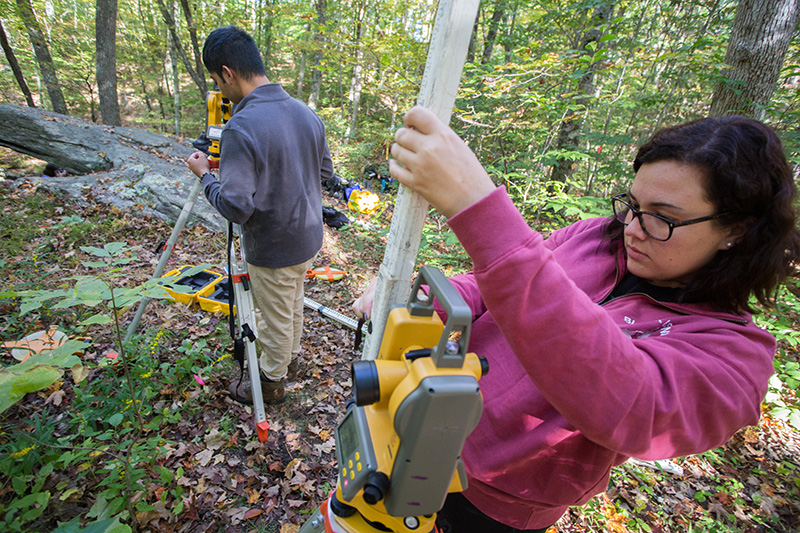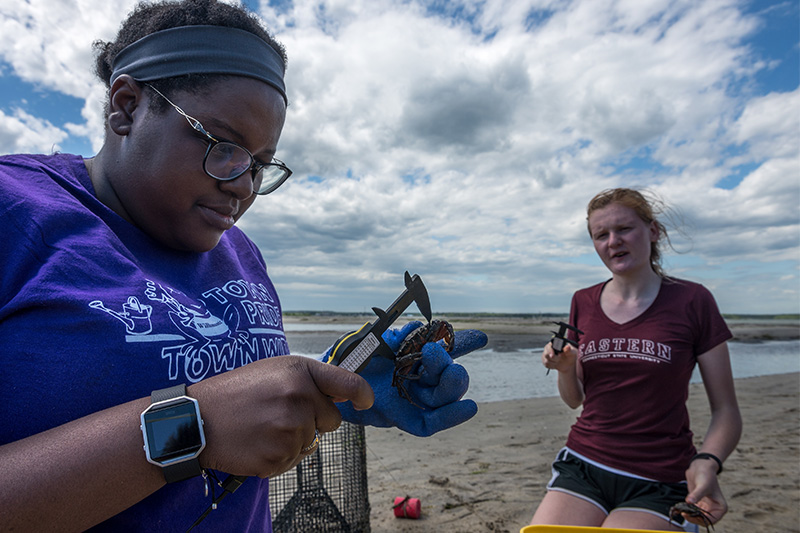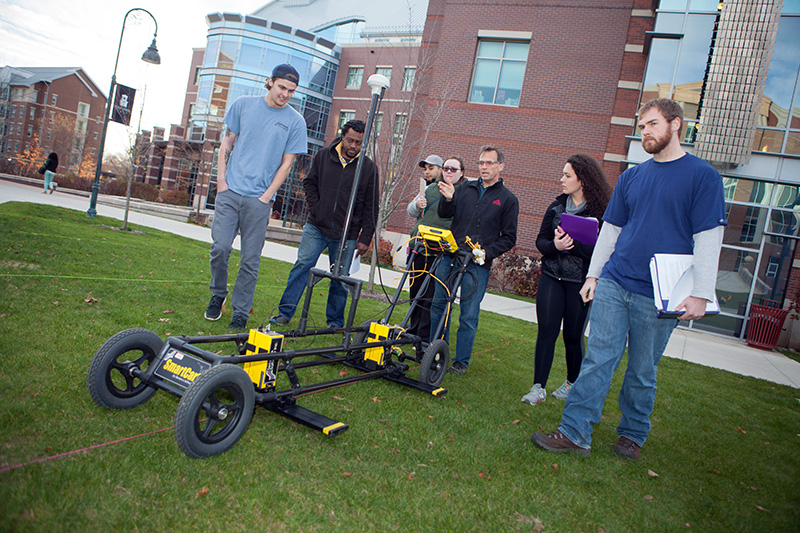- Apply
- Visit
- Request Info
- Give
EES prepares students for climate crisis and green economy
Spotlighting 2 concentrations: Sustainable Energy Science and Environmental Science
Written by Michael Rouleau
Published on March 11, 2021
With climate change and an evolving “green” economy underway, the Environmental Earth Science (EES) Department at Eastern Connecticut State University is preparing students for some of the world’s most pressing challenges and opportunities. Of the four concentrations EES majors can choose from, two in particular — Sustainable Energy Science and Environmental Science — groom them for jobs in a greening economy that seeks to address the existential threat that is climate change.
With the United States recently rejoining the Paris Agreement on climate change, the Biden Administration has set a goal to create 10 million new clean energy jobs and invest $1.7 trillion to help the United States become a net-zero emissions economy by 2050. Locally and in the immediate future, new efforts such as the Northeast regional Transportation and Climate Initiative (TCI) aim to transition consumers away from fossil fuels and toward renewable energy.
“The Sustainable Energy Science concentration prepares students for exciting careers in the new clean energy economy as climate change, sustainability and clean energy initiatives return to the public forefront,” said Steve Nathan, EES chair. “The timing of these policy changes and the shift in market forces could not be better for students who choose the Sustainable Energy Science concentration or the Sustainable Energy studies minor.
“Because the United States and other nations are moving their economies away from using fossil fuels and embracing sustainable, renewable energy sources, there is significant growth in demand for individuals who are trained to be leaders in energy policy, energy science and the energy economy,” said Nathan. “Eastern EES students will be well prepared to enter the rapidly expanding energy job market with the skills and experiences needed to fill these new positions.”
The department’s newest concentration, Environmental Science, steers the EES degree into the areas of ecology and environmental health science for jobs that address such issues as geologic hazards and groundwater contamination. The concentration focuses on environmental monitoring, consulting and remediation, with opportunities for independent studies and internships that integrate field and laboratory experience in the investigation of environmental problems.
“Graduates in the coming decades will face problems that require big ideas and creative thinking,” said Bryan Oakley, EES assistant chair. “The interdisciplinary nature of the (Environmental Science) concentration provides students the option to broaden their environmental education while remaining grounded in the depth of an earth science major.
“A common misconception is that careers in EES are all about rocks,” added Oakley. “The EES major provides students with a solid, earth science-based approach to tackling the environmental issues of the 21st century.”

Graduates of the program go on to work in a variety of sectors, including environmental remediation, hazardous waste management, renewable energy, geospatial science, education and a host of other career paths. Students may also choose to continue their education in graduate school.
Jennifer Croteau ’19 is a staff scientist at INSPIRE Environmental, an environmental consulting company based in Newport, RI. The company uses sediment profile imaging (SPI) technology to monitor the seafloor for projects such as offshore wind farm development. Croteau majored in EES with a concentration in Sustainable Energy Science and minored in Geographic Information Systems. She said the concentration kept her focused on the bigger picture related to climate change whereas the GIS minor prepared her with necessary technical skills for her field, which involves spatially mapping and analyzing the geological conditions of the seafloor.
“The EES program equally prepares students for the professional and academic worlds,” said Croteau. “I was provided with many opportunities to conduct independent research and present at conferences. These opportunities helped me get a jumpstart on building a professional network while still in school, learn and use field techniques outside of a classroom setting and build my resume.”

Cody Lorentson ’14 also majored in EES with a concentration in Sustainable Energy Science. He works as a sustainability scientist for a firm called Apex Companies, where he consults with corporations to ensure their carbon footprints are accurately recorded. He analyzes everything from energy and water consumption, to supply chain activity, waste creation, business travel and more.
“My time in Eastern’s EES program expanded my understanding of global climate change and the types and importance of sustainable development strategies,” said Lorentson. “Through coursework and an independent study, the Sustainable Energy Science track impressed on me the need for a major shift in how the world consumes energy. Building on that, my work experience has taught me that large corporations have an opportunity to use their considerable influence to accelerate the world on its path toward sustainability.”
In addition to Sustainable Energy Science and Environmental Science, EES majors also can concentrate in General Earth Science and Environmental Earth Science. The former includes a broader science background geared for careers in K-12 science education, whereas the Environmental Earth Science track offers a strong foundation in geoscience with advanced courses in remote sensing, glacial geology, coastal geology, geographic information systems and hydrogeology.
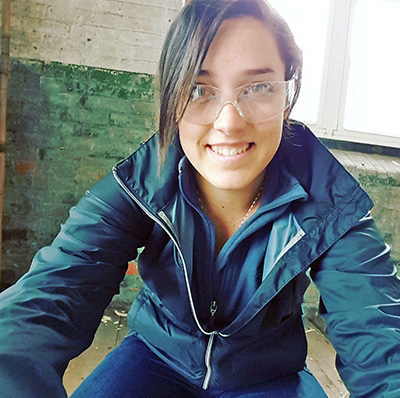
Mackenzie Fannon ’15 majored in EES with a concentration in Environmental Earth Science. She’s a geologist with GEI Consultants. Her field-based position takes her to project sites at contaminated locations, where she works to investigate and ultimately remediate the sites to meet state and federal clean-up goals and regulations.
Upon transferring to Eastern in her freshman year, Fannon was inspired to do as much with the EES Department as possible. She joined the Environmental Club, worked as a peer tutor for EES classes and participated in two research projects.
“My job with GEI occasionally assigns me to projects where I need to travel out of state, sometimes via plane or train,” said Fannon. “I would have never been able to reach this level of confidence and independence had it not been for the experiences and opportunities that stemmed from the EES Department. The real-world experience I had as a student really helped me to be more confident during all aspects of my career.“
For more information about the EES department and its various programs, visit https://www.easternct.edu/environmental-earth-science/.



